Abstract
Pseudomonas sp. strain KC was grown on a medium with a low content of transition metals in order to examine the conditions for carbon tetrachloride (CT) transformation. Several carbon sources, including acetate, glucose, glycerol, and glutamate, were able to support CT transformation. The chelators 2,2'-dipyridyl and 1,10-phenanthroline stimulated CT transformation in a rich medium that otherwise did not support this activity. Low (< 10 microM) additions of dissolved iron(II), iron(III), and cobalt(II), as well as an insoluble iron(III) compound, ferric oxyhydroxide, inhibited CT transformation. The addition of 50 microM iron to actively growing cultures resulted in delayed inhibition of CT transformation. CT transformation was seen in aerobic cultures of KC, but with reduced efficiency compared with denitrifying cultures. Inhibition of CT transformation by iron was also seen in aerobically grown cultures. Optimal conditions were used in searching for effective CT transformation activity among denitrifying enrichments grown from samples of aquifer material. No activity comparable to that of Pseudomonas sp. strain KC was found among 16 samples tested.
Full text
PDF
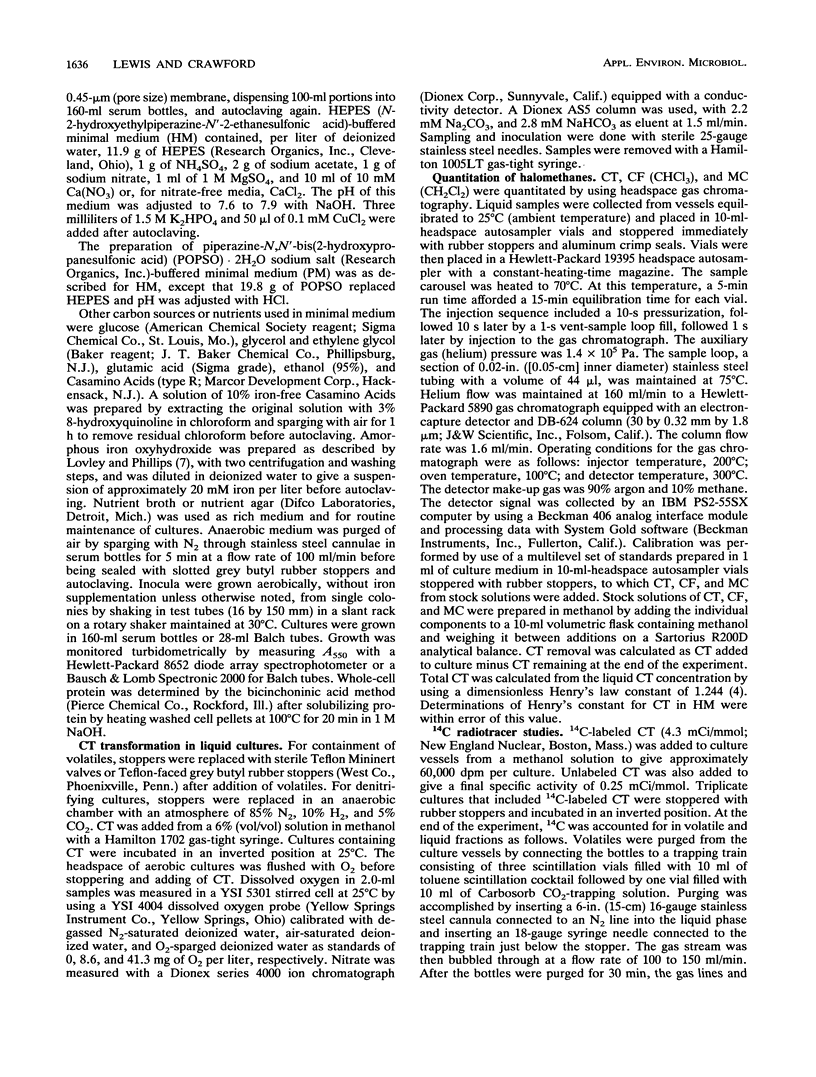
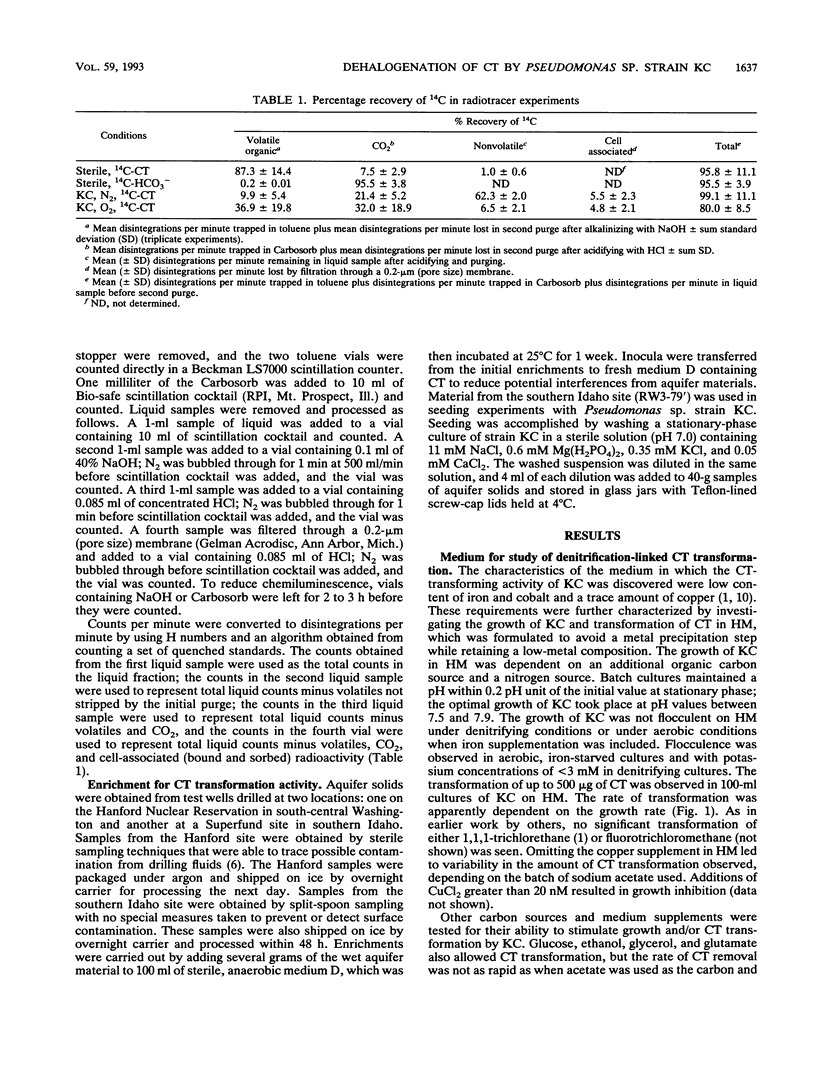
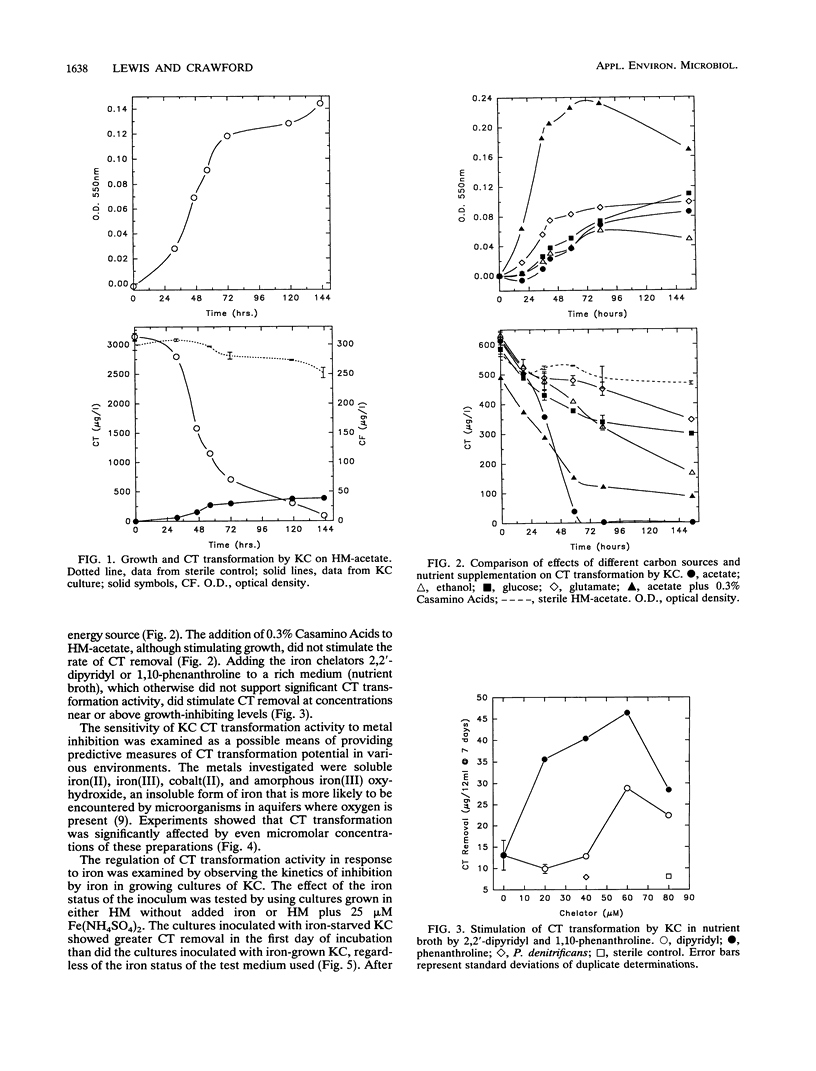

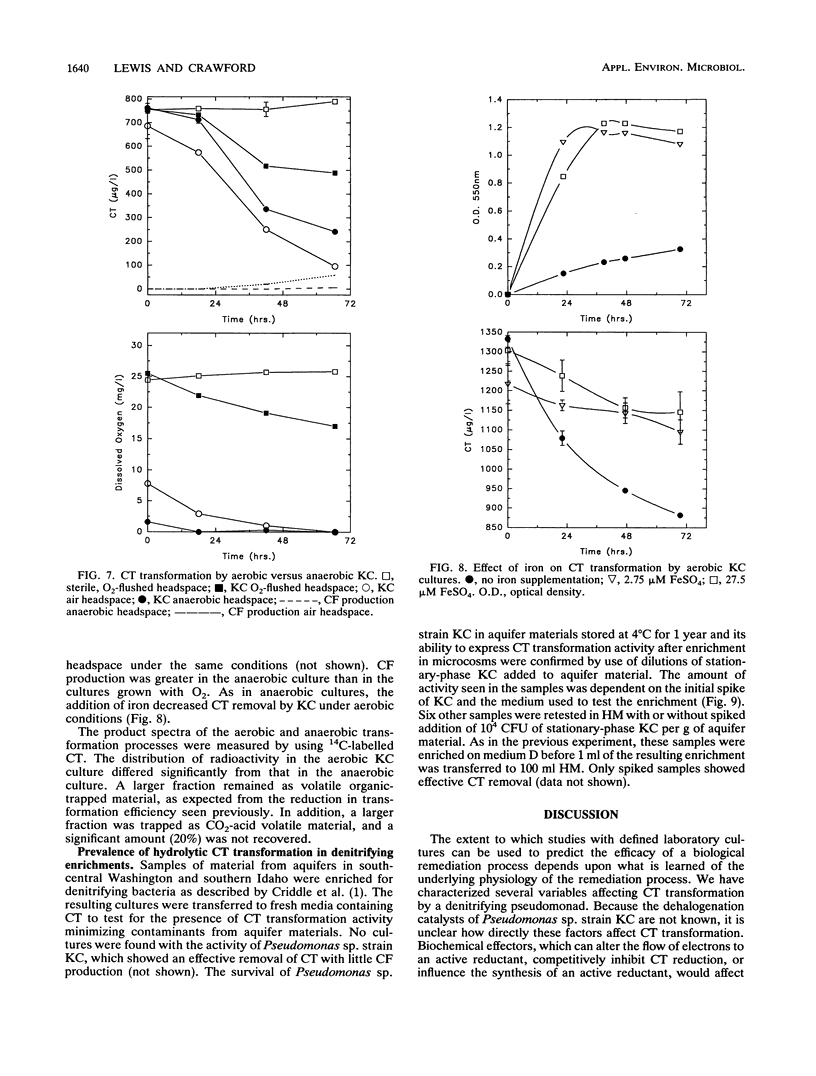
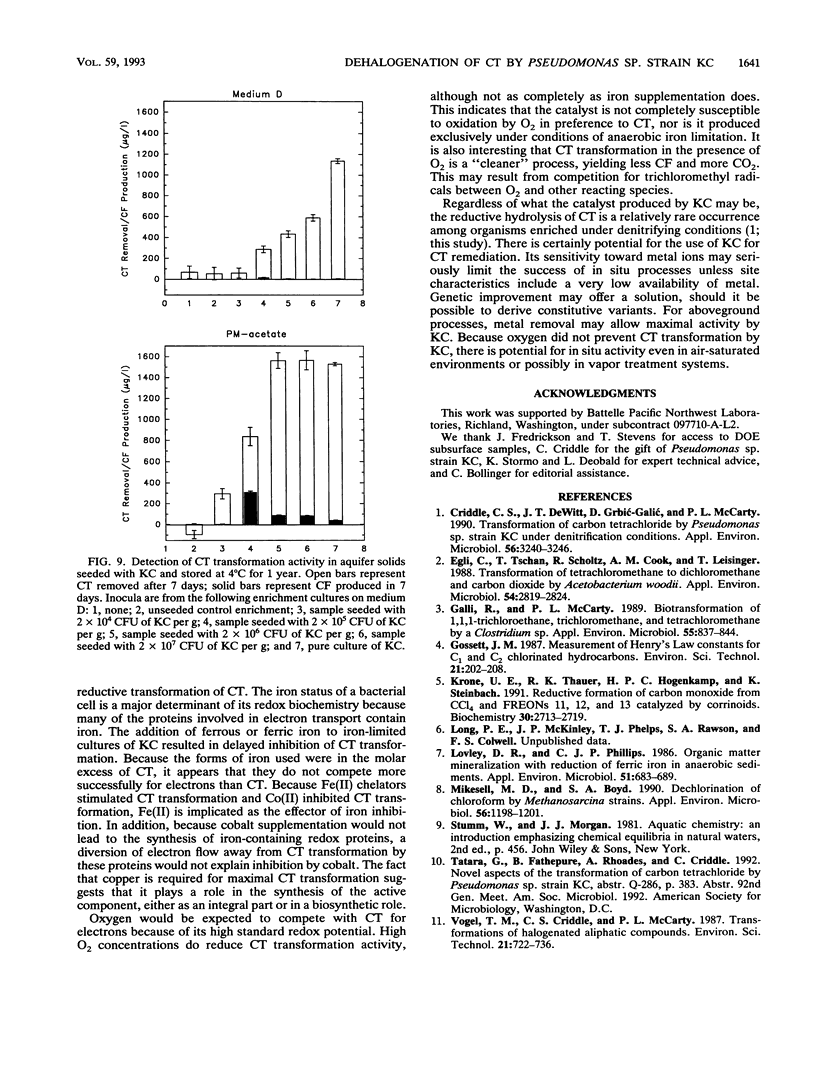
Selected References
These references are in PubMed. This may not be the complete list of references from this article.
- Criddle C. S., DeWitt J. T., Grbić-Galić D., McCarty P. L. Transformation of carbon tetrachloride by Pseudomonas sp. strain KC under denitrification conditions. Appl Environ Microbiol. 1990 Nov;56(11):3240–3246. doi: 10.1128/aem.56.11.3240-3246.1990. [DOI] [PMC free article] [PubMed] [Google Scholar]
- Egli C., Tschan T., Scholtz R., Cook A. M., Leisinger T. Transformation of tetrachloromethane to dichloromethane and carbon dioxide by Acetobacterium woodii. Appl Environ Microbiol. 1988 Nov;54(11):2819–2824. doi: 10.1128/aem.54.11.2819-2824.1988. [DOI] [PMC free article] [PubMed] [Google Scholar]
- Gälli R., McCarty P. L. Biotransformation of 1,1,1-trichloroethane, trichloromethane, and tetrachloromethane by a Clostridium sp. Appl Environ Microbiol. 1989 Apr;55(4):837–844. doi: 10.1128/aem.55.4.837-844.1989. [DOI] [PMC free article] [PubMed] [Google Scholar]
- Krone U. E., Thauer R. K., Hogenkamp H. P., Steinbach K. Reductive formation of carbon monoxide from CCl4 and FREONs 11, 12, and 13 catalyzed by corrinoids. Biochemistry. 1991 Mar 12;30(10):2713–2719. doi: 10.1021/bi00224a020. [DOI] [PubMed] [Google Scholar]
- Lovley D. R., Phillips E. J. Organic matter mineralization with reduction of ferric iron in anaerobic sediments. Appl Environ Microbiol. 1986 Apr;51(4):683–689. doi: 10.1128/aem.51.4.683-689.1986. [DOI] [PMC free article] [PubMed] [Google Scholar]
- Mikesell M. D., Boyd S. A. Dechlorination of chloroform by methanosarcina strains. Appl Environ Microbiol. 1990 Apr;56(4):1198–1201. doi: 10.1128/aem.56.4.1198-1201.1990. [DOI] [PMC free article] [PubMed] [Google Scholar]


